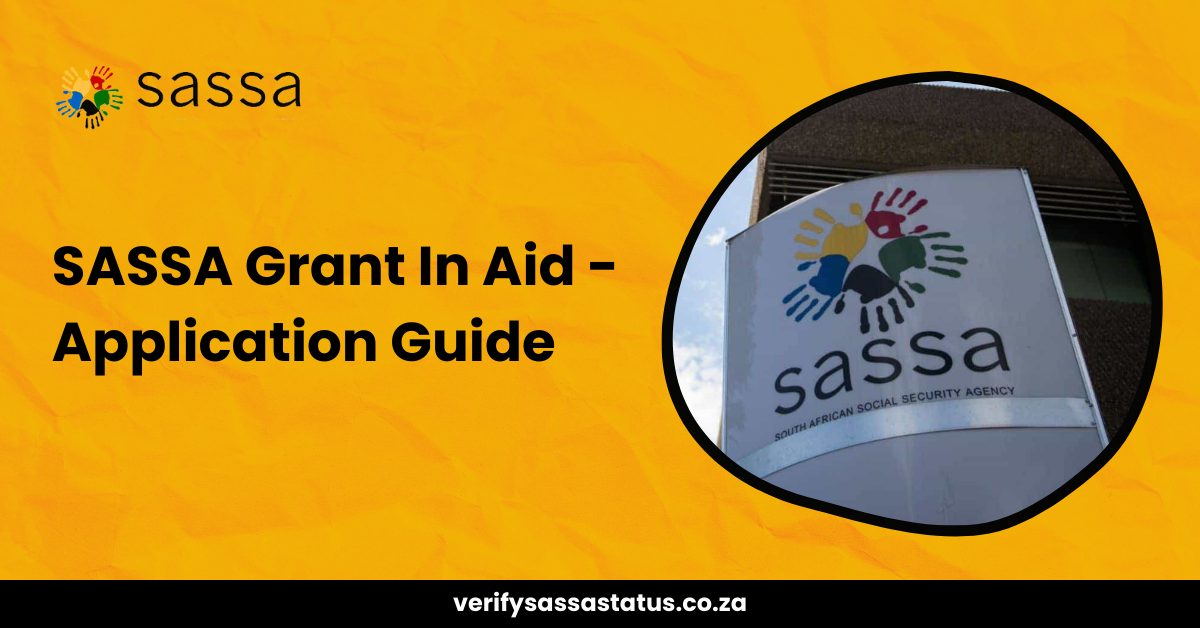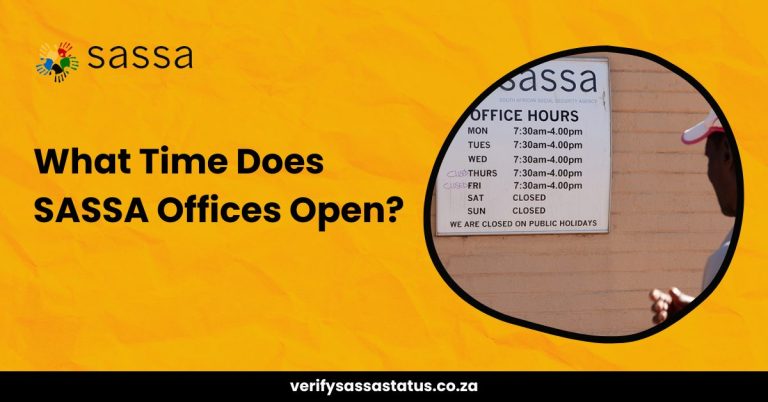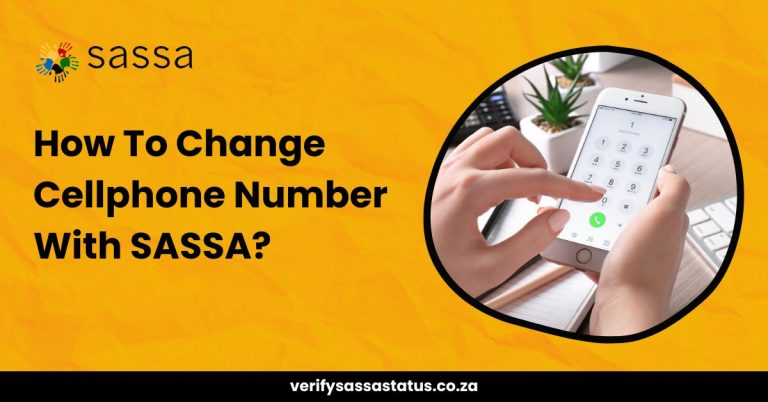SASSA Grant In Aid – Criteria, How to Apply & Benefits

The SASSA Grant In Aid emerges as a beacon of support for individuals grappling with the challenges of full-time care due to disabilities. Administered by the South African Social Security Agency (SASSA), this financial lifeline is tailored for existing social grant holders, offering a helping hand to those unable to navigate independent living.
Specifically designed as a supplement for disability grants, old age grants, and war veteran grant holders, the SASSA Grant In Aid is a comprehensive initiative aimed at providing essential resources for dedicated caregiving. This article seeks to unravel the intricacies of this vital program, exploring its overview, eligibility criteria, required documents, and the step-by-step process of application.
Eligibility Criteria of SASSA Grant In Aid
To embark on the journey of securing the SASSA Grant In Aid, individuals must first navigate through the detailed eligibility criteria. Meeting these prerequisites is crucial for a successful application:
- Main Grant Eligibility: Applicants must fulfill the eligibility criteria of their main grant, including the means test.
- Existing Beneficiary: Only those already benefiting from an old age grant, disability grant, or war veteran grant are eligible.
- Inability to Self-Care: Individuals must be incapable of self-care due to severe mental or physical disabilities, necessitating full-time care at home.
- No State Station Care: Applicants should not currently be receiving care in a state station.
- Valid Medical Assessment Report: A valid medical assessment report, not older than three months, must substantiate the need for full-time care or support services. This report can be obtained from a private doctor.
With these criteria laid out, prospective applicants gain a comprehensive understanding of the prerequisites for delving into the SASSA Grant In Aid application process.
Required Documents for SASSA Grant In Aid
Ensuring a smooth application process for the SASSA Grant In Aid requires the careful compilation of essential documents. Here’s a detailed breakdown of the documentation needed:
- National ID: Present your original 13-digit bar-coded ID or a certified copy.
- Medical Assessment Report: Include a valid medical assessment report, no more than three months old, affirming your disability and the necessity for full-time care or support services. This report can be from a private doctor.
- Marital Status Documentation:
- Married: Provide a Marriage Certificate.
- Divorced: Include the Divorce Decree.
- Spouse Deceased: Furnish the Death Certificate.
- Single: Submit an Affidavit or Sworn Statement.
- Affidavit for SASSA Grant-In-Aid: Ensure the completion and submission of the signed Affidavit for SASSA Grant-In-Aid.
By having these documents in order, applicants set the stage for a comprehensive and well-supported SASSA Grant In Aid application.
SASSA Grant In Aid Amount
Understanding the financial aspects of the SASSA Grant In Aid is integral to appreciating the support it offers. As of January 2024, the grant-in-aid stands at R510 per month for each eligible individual. Notably, there is an anticipated increment of R10 per person per month, set to take effect from April 1, 2024.
SASSA Grant In Aid Means Test
While the grant-in-aid extends crucial financial assistance, it is essential to comprehend the means test applied. This test assesses the financial capability of the applicant, ensuring that the support reaches those who genuinely need it. The means test takes into account various factors, including income, assets, and overall financial standing.
How to Apply for SASSA Grant In Aid
The application process for the SASSA Grant In Aid is designed to be accessible, catering to the diverse needs of potential beneficiaries. Here is a detailed guide on how to navigate through the application procedure:
- Visit Your Nearest SASSA Office: Head to your nearest SASSA office branch to pick up the application form. Alternatively, explore the option of applying online by following the instructions provided on the SASSA services website.
- Complete the Application Form: The application form, available at SASSA offices, needs to be meticulously filled out in the presence of a SASSA officer. You can submit the application for Grant-In-Aid simultaneously with your application for the disability grant, old age grant, or war veteran’s grant.
- Proxy Application: If you are unable to apply in person due to age, illness, or disability, consider having a trusted family member or friend apply on your behalf. They should present a letter from you along with a doctor’s note explaining the reasons for your inability to visit the SASSA office.
- Obtain a Valid Medical Assessment Report: Before applying, secure a valid medical assessment report, not exceeding three months, confirming your severe disability and the need for full-time care at home. This report can be obtained from a private or state-appointed doctor.
- Application Submission: Once the form is completed, submit it to the SASSA officer along with the medical assessment report. The officer will then conduct the necessary interview, either directly with you or through your appointed representative. Fingerprinting will also be part of this process.
- Dated Stamp Receipt: Upon completion, you will receive a dated stamp receipt from the assisting SASSA officer. Even if your application is not successful, retaining this receipt is crucial as proof of application.
With these steps, applicants can navigate the application process with clarity, ensuring a comprehensive submission.
Processing Time of SASSA Grant In Aid
Once the application is submitted, applicants often wonder about the timeline for processing and the subsequent initiation of payments. The processing time for the SASSA Grant In Aid application spans up to three months. Payments commence after the approval of the application. In instances of rejection, SASSA communicates the decision through a letter, providing an explanation for the denial.
SASSA Grant In Aid Status Check
Staying informed about the status of your SASSA Grant In Aid application is crucial for a transparent and informed process. The status check can be easily conducted through various methods:
- SASSA Website: Visit the official SASSA website to check the status by clicking on the designated link.
- Moya APP Using Data-Free Method: Utilize the Moya app with a data-free method to check the status conveniently.
- SMS to SASSA Number 082-046-8553: Send an SMS to the provided SASSA number (082-046-8553) to receive updates on your application status.
- SASSA WhatsApp 082-046-8553: Connect with SASSA through WhatsApp at 082-046-8553 for a seamless status check.
- SASSA Toll-Free Number 0800-601011: Reach out to SASSA via the toll-free number 0800-601011 for assistance and status inquiries.
SASSA Grant In Aid Appeal Process
In the event of a declined application, applicants have the right to appeal the decision made by SASSA. If you firmly believe that the rejection was in error, consider taking the following steps:
- Reconsideration Request: Submit a request to SASSA for reconsideration of your application. This is an opportunity to provide additional information or address any misunderstandings that might have led to the initial denial.
- Formal Appeal to the Ministry of Social Development: If the reconsideration request is also denied, and you still disagree with SASSA’s decision, you can escalate the matter by filing a formal appeal to the Ministry of Social Development at the National Department of Social Development. Ensure this appeal is lodged within 90 days from the date of initial application submission.
- Review and Decision: The Ministry of Social Development will review your appeal and make a decision. If the appeal board concurs with your case, they will reverse SASSA’s decision, and you will resume receiving grant payments. However, if the appeal is denied, you will receive a written explanation detailing the appeal board’s decision.
SASSA Grant In Aid Payment Process
Once your SASSA Grant In Aid application is approved, the subsequent step involves understanding the payment process. SASSA releases payment dates every month, and approved beneficiaries can receive their grants through various methods:
- Direct Deposit in Bank Account or Postbank Account: Opt for direct deposit, but be aware that banks may impose service fees.
- Cash Withdrawal at SASSA-Partnered Retail Outlets: Grants can be withdrawn in cash at partnered retail outlets such as Pick n Pay, Shoprite, Boxer, Checkers, Usave, and Spar.
- Payments from Specific Institutions: Some beneficiaries may receive payments through specific institutions, including old age homes, disability centers, and non-profit organizations.
To receive grant payments through a bank account, applicants need to fill out the Consent Form for SASSA Grant Bank Payment and submit essential documents, including proof of identity, bank account details, and a 3-month bank statement.
How to Check SASSA Grant In Aid Balance?
Monitoring the remaining balance of your SASSA Grant In Aid is a crucial aspect of financial management. After the approval of your application and the initiation of grant payments, regularly checking your balance helps you stay informed about your funds. Here are various methods to conduct a balance check:
- USSD Code on Cellphone: Dial the USSD code 1203210# or 12069277# through your cellphone to access your grant balance conveniently.
- ATM Withdrawal: Visit any ATM to check your grant balance, although normal bank charges may apply.
- SASSA WhatsApp Number 082 046 8553: Utilize the SASSA WhatsApp number (082 046 8553) to inquire about your grant balance through a messaging platform.
- SASSA Call Center Toll-Free Number 0800 601 011: Connect with the SASSA call center via the toll-free number for assistance and balance inquiries.
Regularly reviewing your grant balance ensures that you have up-to-date information, facilitating effective financial planning and decision-making. Moving forward, let’s delve into the review processes initiated by SASSA to ensure the ongoing eligibility of grant recipients.
SASSA Grant In Aid Reviews
SASSA reserves the right to conduct periodic reviews of grants, including the Grant In Aid, based on the income declared during the initial application. These reviews serve multiple purposes:
- Means Test Criteria Verification: SASSA reviews aim to ensure that beneficiaries still meet the means test criteria required for the grant.
- Circumstances Evaluation: The reviews assess whether the circumstances of the grant recipient have improved or changed.
- Verification of Vital Status: SASSA verifies the continued existence of the grant recipient.
To streamline the review process, applicants are encouraged to keep their application information updated, especially when circumstances change. SASSA issues a written notice before the review, providing details about the date, location, and requirements for the review.
For applicants who receive their grant through a bank, institution, or agent, an annual submission of a life certificate to the SASSA office is mandatory. If a beneficiary is bedridden, SASSA officials may conduct the review at the recipient’s home.
Review processes for refugee applicants are initiated when their refugee status approaches expiration. Now, let’s explore the potential reasons for grant suspension and the subsequent restoration or lapsing of the Grant In Aid.
Suspension Reasons and Restoration/Lapsing of Grant-In-Aid
Grant suspension is a measure taken by SASSA in specific circumstances. Understanding these reasons is crucial for beneficiaries to maintain their eligibility for the Grant-In-Aid. Here are the common reasons for the suspension of the grant:
- Change in Circumstances: If there is a significant change in the financial or medical circumstances of the grant recipient, SASSA may suspend the grant.
- Providing False Information or Fraud: If a beneficiary is found to have provided false information or committed fraud during the application process or reviews, SASSA can suspend the grant.
- Failure to Cooperate in Reviews: Non-cooperation during the review process can lead to the suspension of the Grant-In-Aid.
- Outcome of the Review: If the review indicates that the beneficiary no longer meets the eligibility criteria, the grant may be suspended.
- Mistaken Approval: If the grant was initially approved by mistake, SASSA may suspend it upon discovery.
In case of a suspension that the beneficiary believes to be in error, there is a recourse available. Beneficiaries can lodge an appeal with the Ministry of Social Development at the National Department of Social Development within 90 days from the date of suspension.
Restoration of the Grant
If a beneficiary believes that their grant was wrongly suspended or disagrees with SASSA’s decision, they have the right to appeal. The appeal process involves submitting a request for reconsideration to the Ministry of Social Development. If the appeal board agrees with the beneficiary, the suspension is reversed, and the grant payments resume. However, if the appeal is denied, the beneficiary receives a written explanation of the decision.
Lapsing of Grant-In-Aid
The Grant-In-Aid may lapse under specific conditions:
- Death of the Beneficiary: In the unfortunate event of the beneficiary’s passing, the grant-in-aid will naturally lapse.
- Inability to Prove Vital Status: If the beneficiary is unable to provide proof of being alive when requested, the grant will be reviewed annually to confirm the recipient’s vital status.
- Non-collection of Payments for 3 Months: If the grant payments are not collected for three consecutive months, the beneficiary can apply to restart the payments. However, if more than 90 days pass, a new grant application is necessary.
- Admission to Government-Funded Institutions: If the beneficiary is admitted to a fully government-funded institution like a hospital or jail, the grant may lapse.
- Extended Absence from the Country: If the beneficiary is out of the country for more than 90 days without notice, the grant may lapse.
Understanding these conditions and responsibilities is essential for grant beneficiaries to navigate the SASSA Grant-In-Aid system effectively.
Conclusion
In conclusion, the SASSA Grant-In-Aid serves as a vital financial lifeline for individuals facing severe disabilities who require full-time care at home. Navigating the application process, eligibility criteria and ongoing responsibilities is essential for beneficiaries to access the support they need.
As the SASSA system evolves, staying informed about updates and changes is crucial for a positive and continuous grant experience. The Grant-In-Aid not only provides financial assistance but also aims to enhance the quality of life for those in need.






